Recent Articles
Popular Makes
Body Types
10 Things that Make the 2017 Acura NSX a Supercar
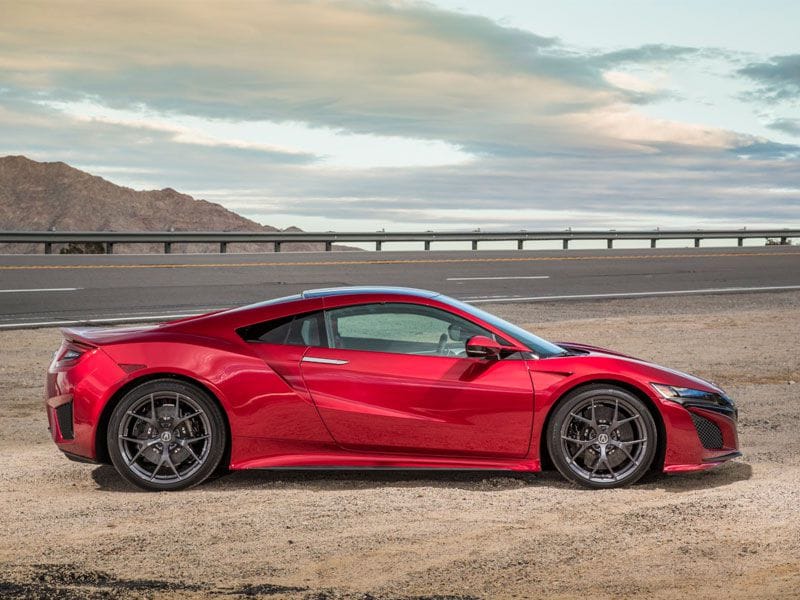
2017 Acura NSX side view ・ Photo by Acura
Acura introduced the world to its first-generation NSX supercar in 1990. The aluminum-bodied coupe was engineered on a Cray supercomputer and styled after an F-16 fighter jet. Its performance — a 0-60 sprint in about 5.7 seconds and a top speed of 168 mph — was among the best in the world, especially for a $60,600 exotic.
A little more than 25 years later, Acura has introduced an all-new successor that is more capable and powerful than its predecessor — consider its estimated 0-60 time of less than three seconds and a top speed of 191 mph.
Its most eye-opening detail, however, is found with its innovative powertrain. Unlike the first-generation model, which relied on a single combustion engine, the all-new NSX is built around a sophisticated gasoline-electric hybrid powertrain that delivers both high levels of power and impressive fuel efficiency.
What other details make the 2017 Acura NSX a supercar? Read our top-10 list to find out.
1) The 2017 Acura NSX is constructed with a multi-material space frame.
Nearly all of today’s mass produced passenger cars are built primarily out of steel, which is an excellent material choice in terms of cost, availability, strength, and durability. Supercars, on the other hand, rely on much more exotic construction to ensure they are lightweight and strong. This design maximizes performance, without any concession to safety or durability.
The Acura NSX blends traditional steel with lightweight aluminum alloys and composite plastics, including carbon fiber, for its construction. This multi-material “space frame” — the name given to lightweight assemblies comprised of multiple interlocking pieces — allows the supercar to deliver best-in-class rigidity and best-in-class safety, besting cars from Porsche, Audi, and Ferrari.
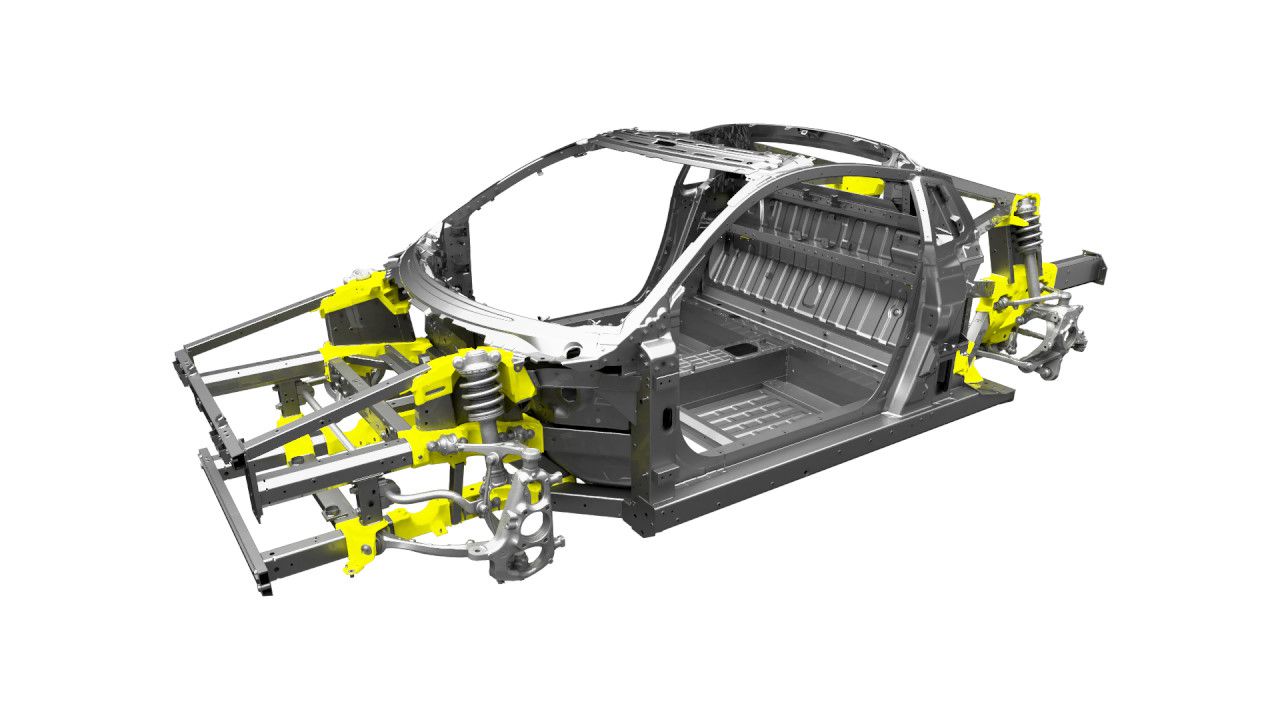
2) The 2017 Acura NSX is driver-focused with minimal utility functionality.
Commuters and soccer moms prefer vehicles with generous utility and storage space, but not owners of supercars — their mission is performance.
While the Acura NSX is fitted with a small trunk on the aft end of the vehicle, which holds a single golf bag and clubs, there are no door pockets, storage compartments, or even cup holders within the cabin. If owners want to pack more than one piece of luggage, the second and third bag will have to ride in the passenger foot well. If owners want to bring a coffee or soda can, Acura makes an add-on cup holder that clips into the side of the center console.
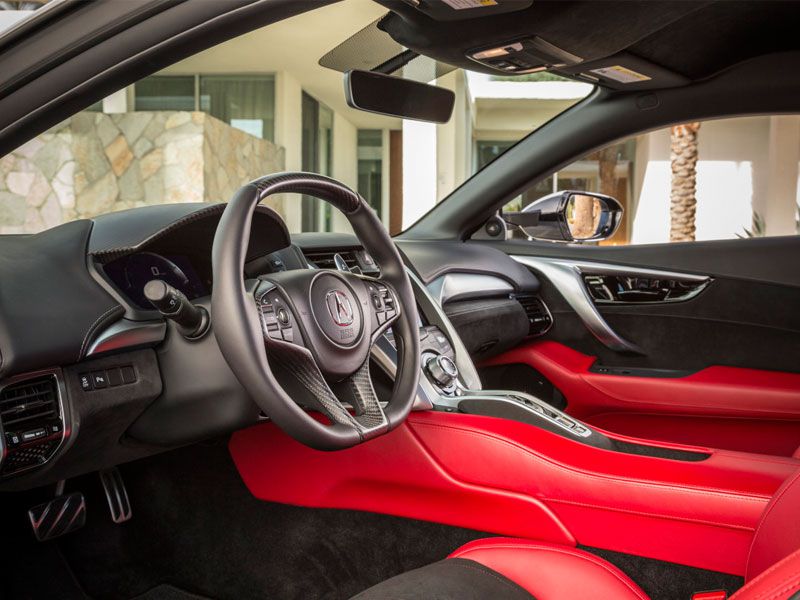
Photo by Acura
3) The 2017 Acura NSX has four different propulsion systems.
Most vehicles on the road have but one propulsion system, which is commonly a combustion engine that burns gasoline. Hybrid vehicles typically have two, which include the combustion engine and an electric motor.
The Acura NSX is fitted with four: one combustion engine and three electric motors!
Horsepower enthusiasts will like the twin-turbocharged 3.5-liter V6, which is rated at 500 horsepower and 406 pound-feet of torque. It is partnered with a 47-horsepower electric motor that is sandwiched between the V6 and the transmission. In addition, there are two 36 horsepower electric motors in the nose, which are each tasked with powering an individual front wheel. Total system power of the gasoline-electric hybrid NSX is 573 horsepower and 476 pound-feet of torque — more than double the output of the original NSX.
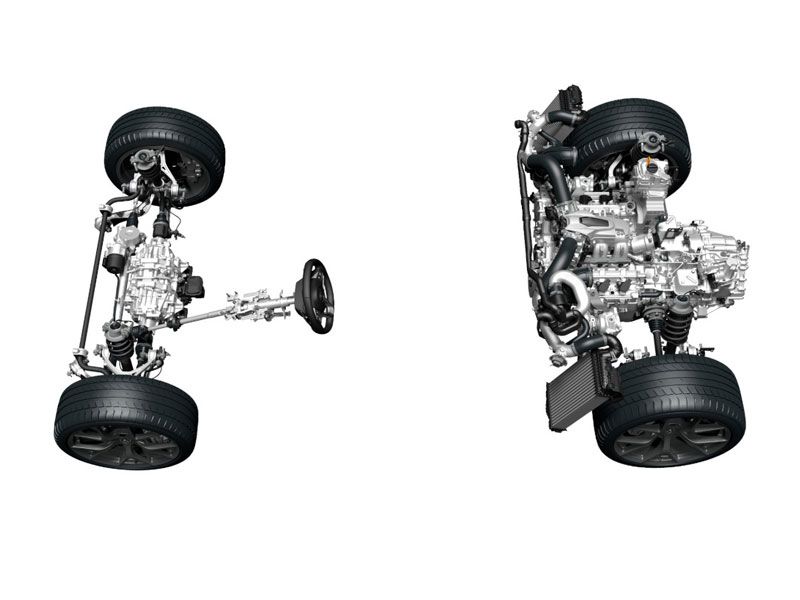
Photo by Acura
4) The 2017 Acura NSX is fitted with an Integrated Dynamics System.
Rather than simply press the start button and zoom away, Acura offers drivers of its all-new NSX an Integrated Dynamics System (IDS) that allows them to tailor the driving dynamics of the supercar to their specific requirements. The four-mode IDS, which is configured through a dial on the center console, offers the following settings: Quiet, Sport, Sport+, and Track.
The IDS alters 11 different functions of the vehicle, which include steering assist, brake assist, torque vectoring, throttle response, accelerator pedal mapping, transmission mapping, engine sound, and battery management. While it sounds like science fiction — it almost is — what it really means is that the vehicle is in the same mindset as the driver, whether they are commuting to work on the open highway, stuck in traffic, or competing for the fastest lap time on a racing circuit.
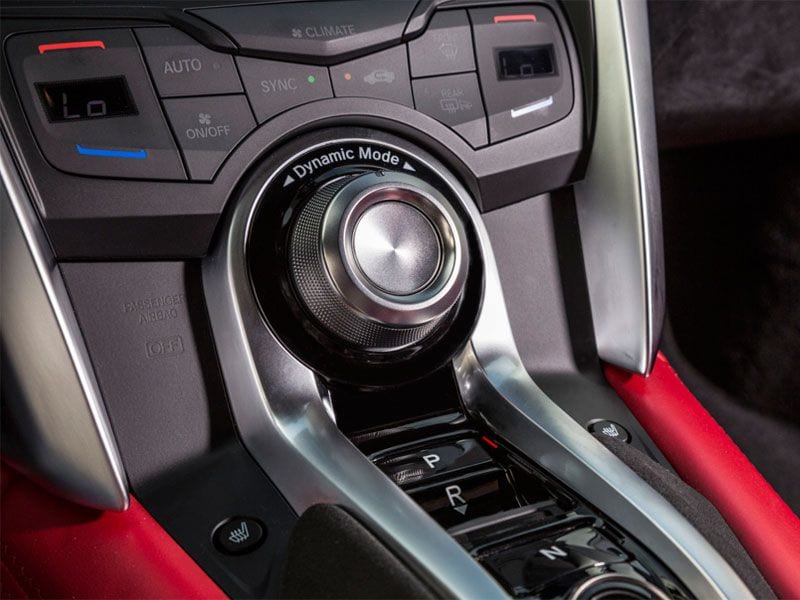
Photo by Acura
5) The 2017 Acura NSX has an innovative brake-by-wire system.
Mimicking the level of sophistication found on fighter jets, Acura has fitted its all-new NSX with brake-by-wire. Simply stated, this means there is no real mechanical linkage between the brake pedal and the calipers at each wheel.
Instead of a traditional hydraulic system, which relies on fluid to regulate brake pressure, the brake-by-wire system uses a rheostat (a small device that measures movement) to send electronic signals to a processor that triggers the electrohydraulic brakes — it is all computerized. (No need to worry, as there is a back-up braking system, in addition to the standard parking brake, in the event of a full electrical failure.)
There are several advantages to this system that include less weight, less maintenance, and the ability to seamlessly integrate friction braking (the brake pad touching the rotor) and regenerative braking (the electric motors sending electricity back to the batteries).
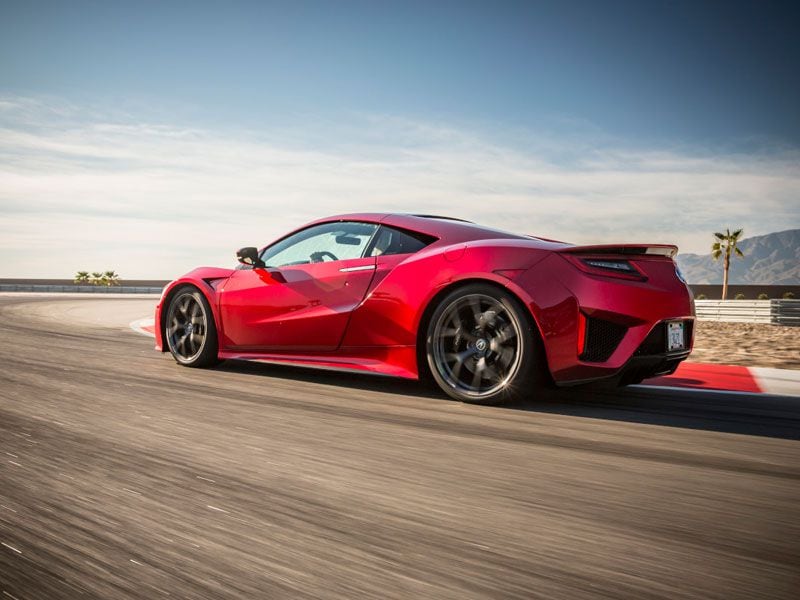
Photo by Acura
6) The 2017 Acura NSX has magnetic suspension.
Although the new NSX isn’t quite capable of flying, it does use a very sophisticated suspension system that gives passengers a glass-smooth ride on some surfaces. Credit goes to its standard Active Gen III magnetorheological coilover damper system. This is a type of shock absorber that contains oil laden with magnetically sensitive particles. A magnetic current is applied to the shock, which electronically alters how thick or thin the fluid it (the technical term is viscosity).
As the driver switches modes on the Integrated Dynamics System (IDS), the shocks go from soft to firm, thus allowing the NSX to have a soft ride over potholes but a firm ride in the canyons or on the track.
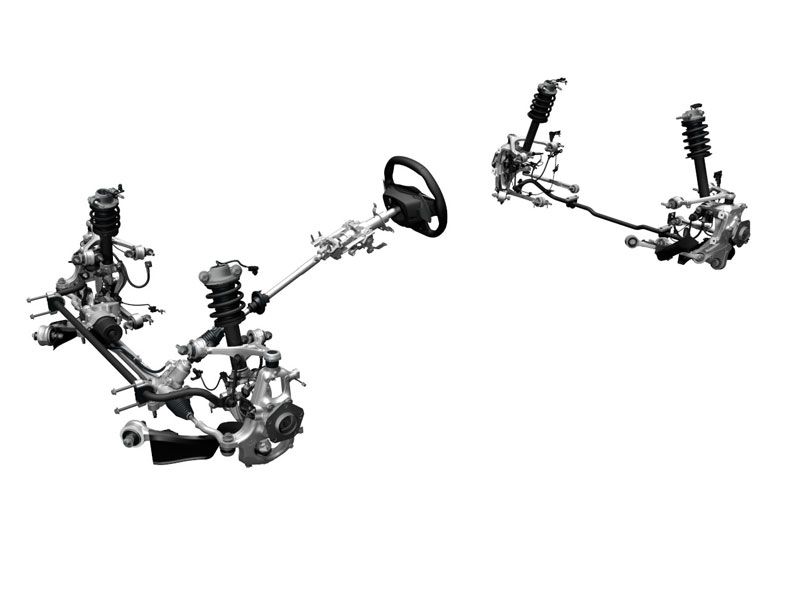
Photo by Acura
7) The 2017 Acura NSX delivers performance that belies its curb weight.
Put the all-new Acura NSX on a scale and it will top 3,800 pounds. That is nothing compared to one of today’s heavy crossovers or SUVs, which often top 4,000 pounds, but it is significantly more than the typical Ferrari, Lamborghini, or Porsche supercar.
Yet despite its mass, the engineers at Acura have designed it with lightning-fast steering reflexes and instantaneous throttle response — combined, these qualities give the operator the impression of driving something much smaller and lighter. Skilled drivers are able to toss the NSX around a track with ease, while it still feels small and nimble while negotiating city traffic.
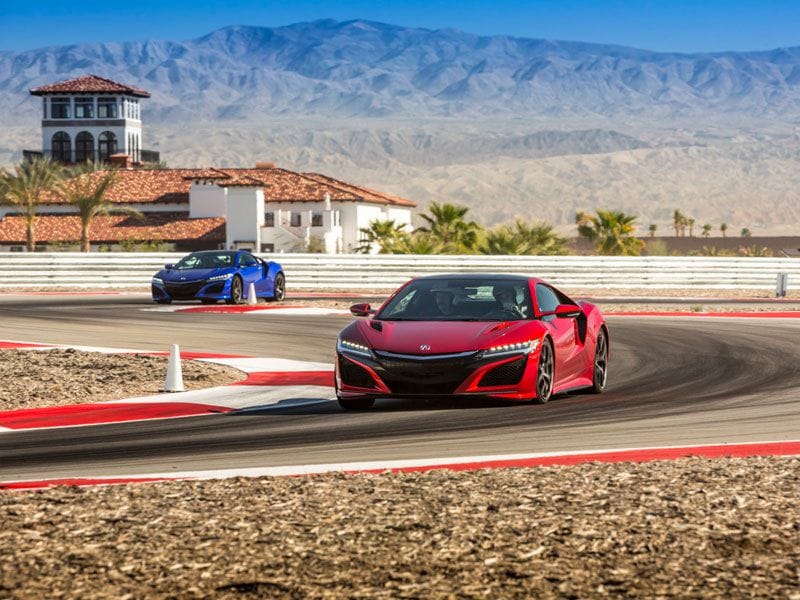
Photo by Acura
8) The 2017 Acura NSX offers torque-vectoring capabilities.
Torque-vectoring is the ability to control the rotation of each wheel individually and use that capacity to turn the vehicle — or stabilize the chassis — without physically turning the steered wheels (e.g., applying brakes to the inside wheel pivots the vehicle around the slower wheel). The technology is very sophisticated and advanced, but proper tuning and calibration means the driver is unaware of the assistance.
Even though the Acura NSX isn’t the first vehicle to be fitted with torque-vectoring capabilities, it is likely the first to be able to use it individually to each front wheel via the two electric drive motors. This means the outside front wheel is capable of accelerating the supercar around a corner while the inside front wheel simultaneously decelerates and generates electricity for the battery.
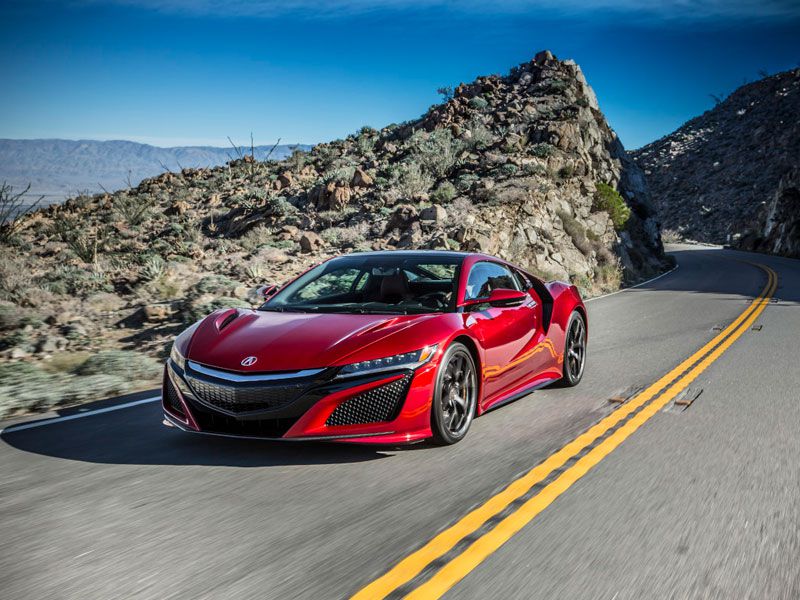
Photo by Acura
9) The 2017 Acura NSX is a custom hand-built vehicle.
Most of us go to a new car dealership and select an in-stock vehicle to purchase. Maybe if they don’t have the exact color, or options, we will ask the dealer to trade for something within the local region. Rarely, if ever, do consumers order a car — but these rules don’t apply to the NSX.
The all-new NSX — designed and built in Ohio — is Acura’s first “build-to-order” vehicle. This means every single one of supercars are configured and created by the customer digitally, and only then will it be built to their exact specification. The automaker has implemented a new “factory installed feature” (FIF) system that allows it to fill each unique order efficiently, and it is scalable to accommodate production variances. It is even more impressive that Acura’s FIF system allows dealers to send information to the factory and make customer changes only weeks prior to production.
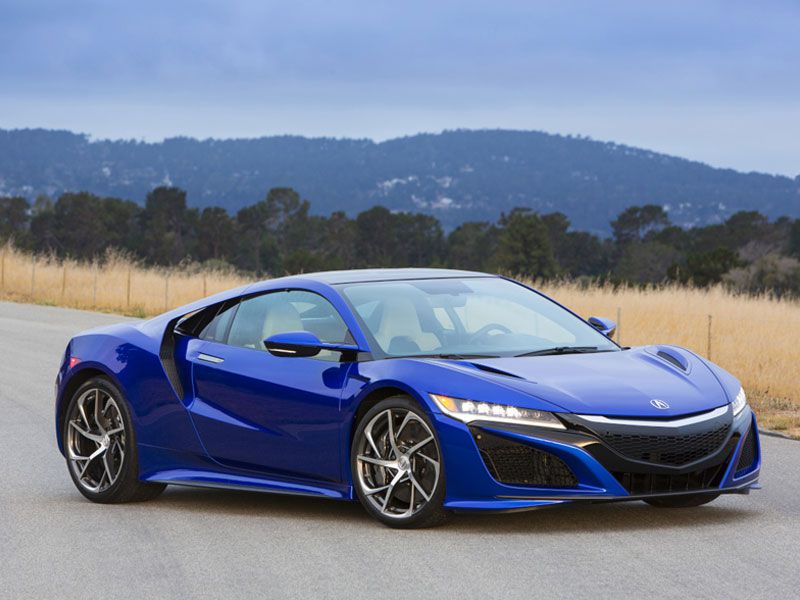
Photo by Acura
10) The 2017 Acura NSX is reasonably priced.
If the $1.4 million price tag of a Ferrari LaFerrari, the $1.15 million price of the McLaren P1, or the $845,000 price tag of the Porsche 918 Spyder causes heart palpitations, rest easy knowing the Acura is offering its all-new NSX — with equally as impressive engineering and very similar performance — for a low base price of just $156,000.
Of course Acura will allow its customers to drive up the price with fancy options. The Carbon-Ceramic Brake upgrade is $9,900 and the Exterior Sport Package is $9,000. Adding carbon-fiber to the engine cover will cost an additional $3,600, while a carbon-fiber rear spoiler will set the owner back $3,000. Want navigation? That will be $3,300 with Sirius Satellite Radio. Want your NSX in glittery red? Order the ultra-premium Valencia Red Pearl, which uses the “Andaro” paint process, and it will lighten your wallet by $6,000.
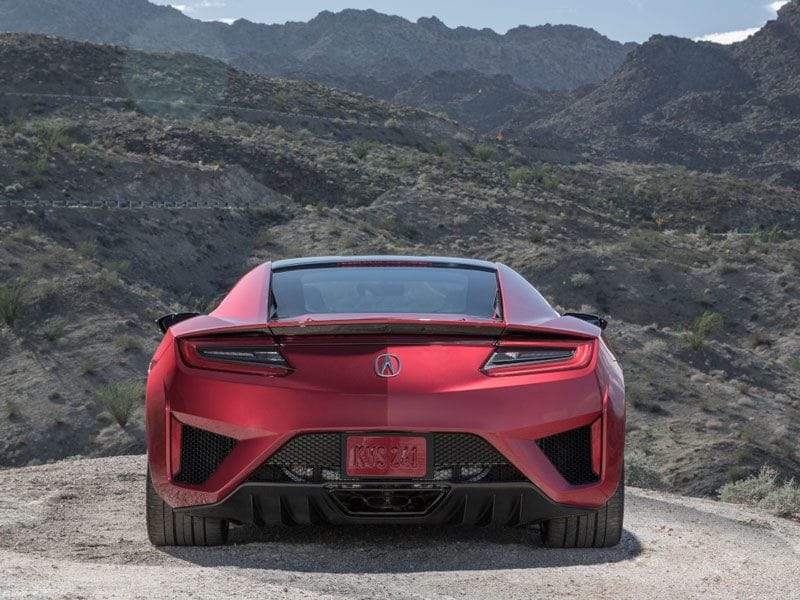
Photo by Acura